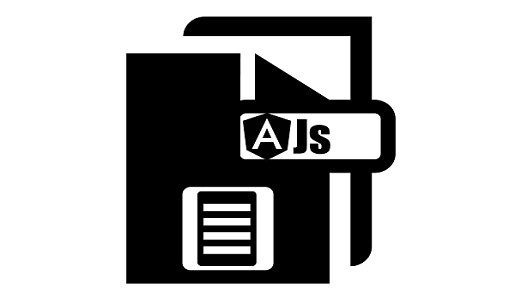Angular 16 Guide: 7 New Brainstorming Features For Developers

Believe it or not! Angular is the most prominent web applicate development framework that comes with great features. Since its introduction, Angular has been releasing new updates to let developers create robust web apps using improved tools and features.
Angular 16 is the latest major version of the Angular framework, released on May 3, 2023. It includes a number of new features and improvements to help developers build interactive, cross-browser-friendly, and quality web applications without a hint of stress.
Here are some of the key features introduced by the latest version of Angular i.e. Angular 16, that will make a developer’s life easy and relaxed:
How Do New Features Help Developer’s Community?
The new version or updated Angular framework will address several quality improvements requested by the developer’s community worldwide. Below is the list of 7 brain-storming features that will change your life and make the web development process more compatible and driven for the entire community of developers.
1. Reactivity Revamped
This is one of the best features in Angular 16 and it has changed the way this web app development framework manages reactivity. It is designed to boost the performance and developer’s experience by making the reactivity model easier, seamless time-efficient, and more efficient.
The old reactivity model in Angular was based on the Zone.js library.
Zone.js is a library that intercepts and modifies asynchronous events, such as timer events and XHR requests. This enables Angular to track changes to data and trigger change detection when required.
On the other hand, the new reactivity model in Angular is based on the Angular Signals library. Angular Signals is a library that provides a simpler and more efficient way to track changes to data. It does this by using signals, which are lightweight objects that represent changes to data.
Key Benefits are:
- Boost the runtime performance
- Simplify mental model to write and debug Angular code.
- Fine-grained reactivity to improve performance
- You can write and rewrite your existing code with ease
2. Signals
Signals are also a great feature in Angular 16 that enables you to develop unidirectional data flow between components. It lets you improve the performance and readability of your code.
A signal is a reactive value that can be observed, updated, and notified to any dependents. Being a lightweight object, it represents a change to data.
This new feature can track changes to data and trigger updates when required.
Key Benefits:
- Highly improved performance because signals are lighter than Zone.js.
- Easier Mental Model
- This feature is used to create unidirectional data flow to avoid errors and boost performance.
To use signals in Angular, you first need to create a signal. You can do this by using the new WritableSignal() function. For example:
const mySignal = new WritableSignal();
Once you have created a signal, you can update its value by calling the next() method. For example:
mySignal.next(10);
You can also subscribe to a signal to be notified when its value changes. To do this, you can use the subscribe() method. For example:
mySignal.subscribe((value) => {
console.log(value);
});
When the value of the signal changes, the subscribe() method will be called with the new value.
3. The Required Component Inputs
The Required Component Inputs lets you mark component inputs when necessary. It also means that the component’s consumer must provide a value for the input otherwise a compile-time error will be thrown.
To mark an input as required, use the required property on the @Input() decorator. For example:
@Input({ required: true })This tells Angular that the title input is required and that the consumer of the component must provide a value for it.
title: string;This can prevent errors in your Angular-based apps and all the components will be initialized in the correct format.
4. NGCC or Angular Compatibility Compiler Remove
This is the latest feature of Angular 16 can convert AngularJS code to Angular code. The Angular compatibility Complier Remover feature was introduced to remove the requirement for NCC.
It means web apps can now be built without using Ngcc and can improve the overall build performance of these apps.
All you need to do is to set the ngc flag to false in your Angular 16 project’s angular.json file.
5. Server Side Rendering and Hydration
SSR and hydration are two major features of Angular 16 that can boost the performance as well as the interactive interface of web applications.
Server-side Rendering is the process of rendering the initial HTML of apps on the server before sending it to the client’s browser. This means the browser won’t have to do the hard work to renter initial pages. It can improve the overall page load speed.
Hydration, on the other hand, can convert the static HTML that was earlier rendered on the server into dynamic web pages. It is done by the browser, which takes the static HTML and adds the JavasScript code to create interactive pages.
6. The Bind Route Param into Component Inputs Directly
The Bind Route Param into Component Inputs Directly feature of Angular 16 allows you to bind route parameters directly to the inputs of a component. This can be done by using the withComponentInputBinding feature in the RouterModule.forRoot() method.
For example, the following code shows how to bind the id route parameter to the productId input of the ProductComponent:
const routes: Routes = [ { path: 'products/:id', component: ProductComponent, withComponentInputBinding: true, },];7. DestroyRef
The DestroyRef is a new provider introduced in Angular 16 that allows you to register to destroy callbacks for a specific lifecycle scope. This feature is applicable to components, directives, pipes, embedded views, and instances of EnvironmentInjector.
The DestroyRef can be used to perform cleanup tasks when a scope is destroyed. For example, you can use the DestroyRef to unsubscribe from Observables or close sockets.
To use the DestroyRef, you need to inject it into your component or directive. Once you have injected the DestroyRef, you can register a destroy callback using the register() method. The destroy callback will be called when the scope is destroyed.
The following code shows how to use the DestroyRef to unsubscribe from an Observable:
import { Component, OnDestroy } from '@angular/core';import { Observable } from 'rxjs'; @Component({ selector: 'my-component', templateUrl: './my-component.component.html',})export class MyComponent implements OnDestroy { constructor(private readonly destroyRef: DestroyRef) {} ngOnInit() { this.subscription = Observable.interval(1000).subscribe(() => { console.log('Tick'); }); } ngOnDestroy() { this.subscription.unsubscribe(); } }Conclusion
These are some of the best features of Angular 16 that will change the way developers create highly interactive, fast, and robust web applications. You can leverage the benefits of these new features and take your web development project to the next level.




